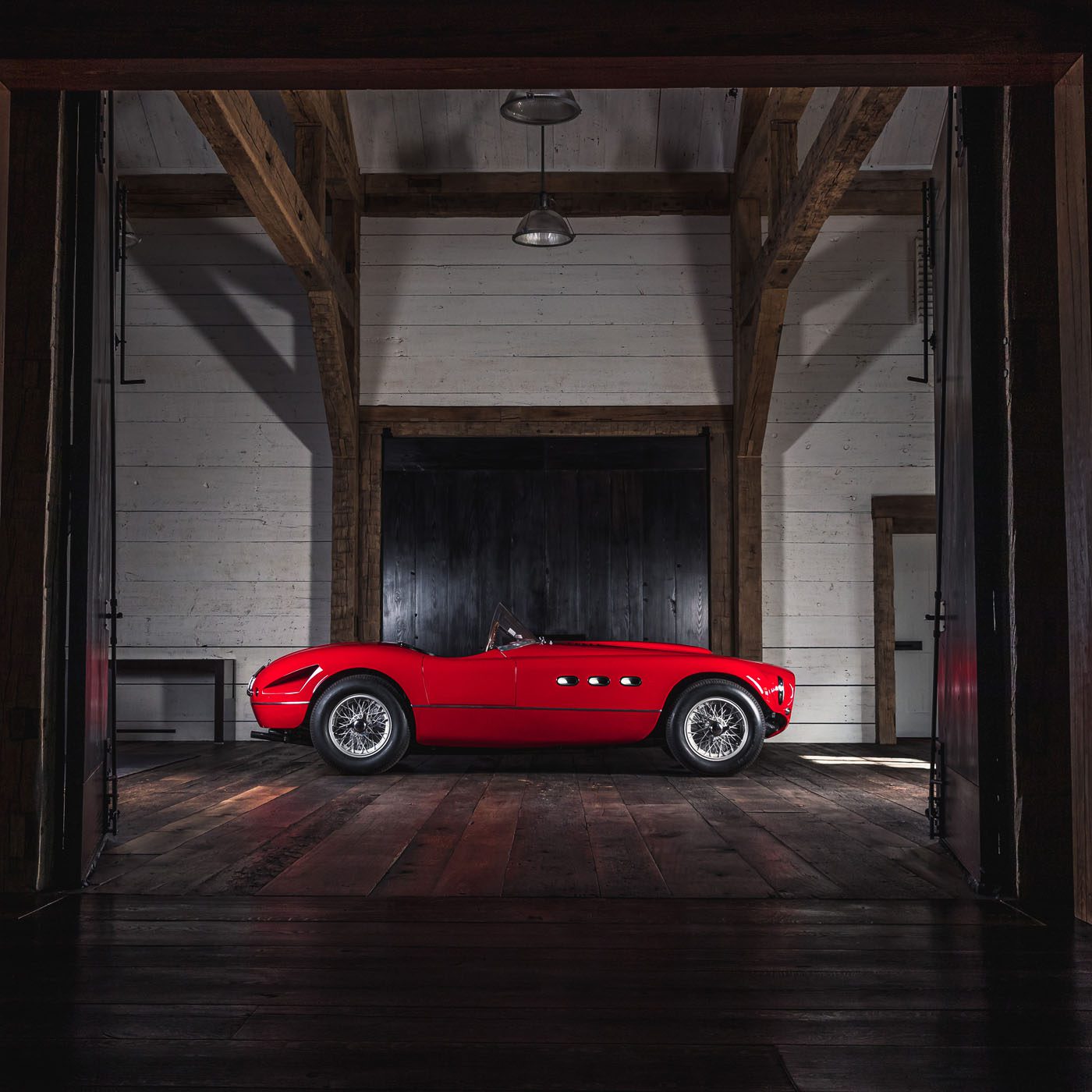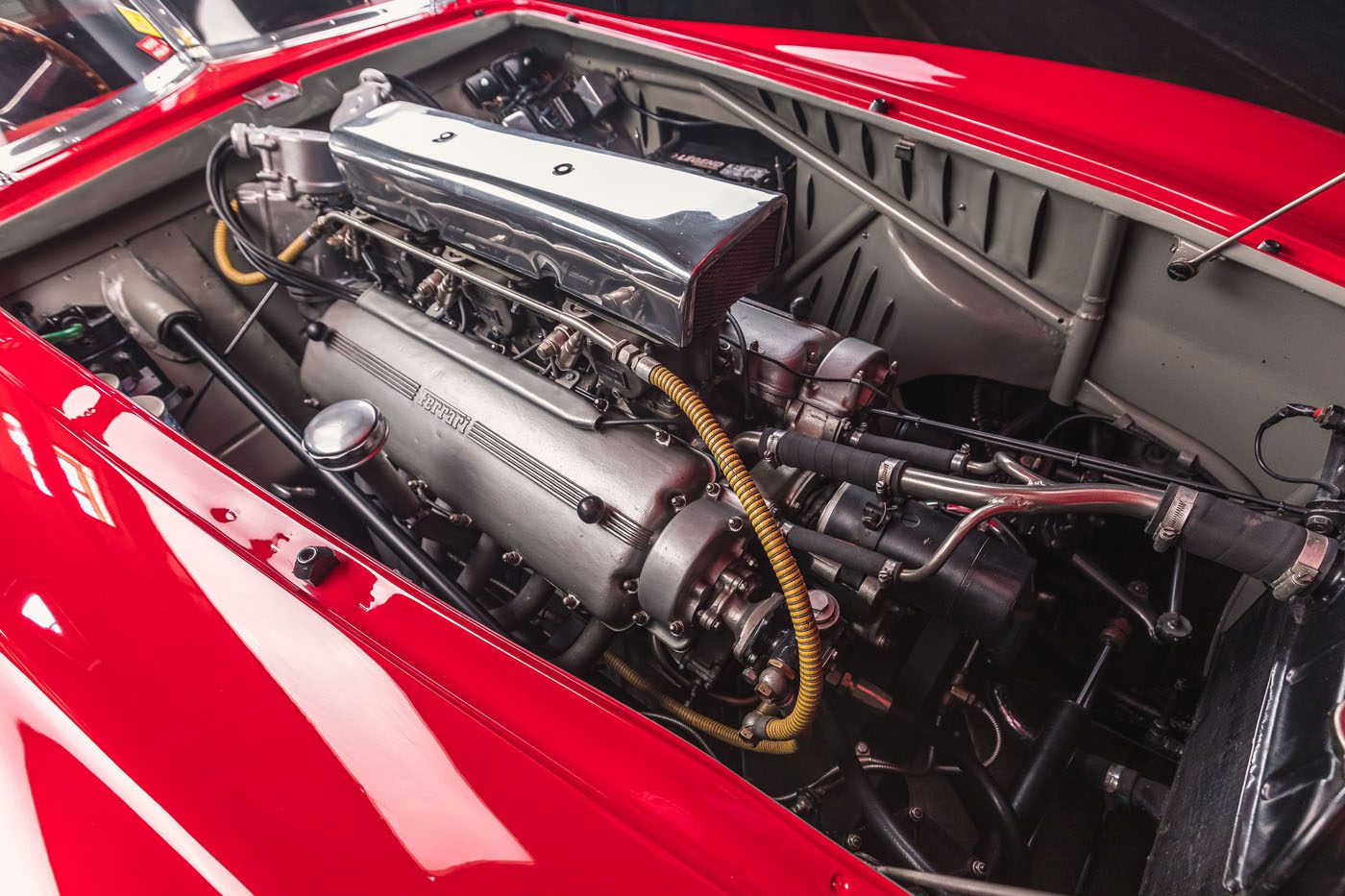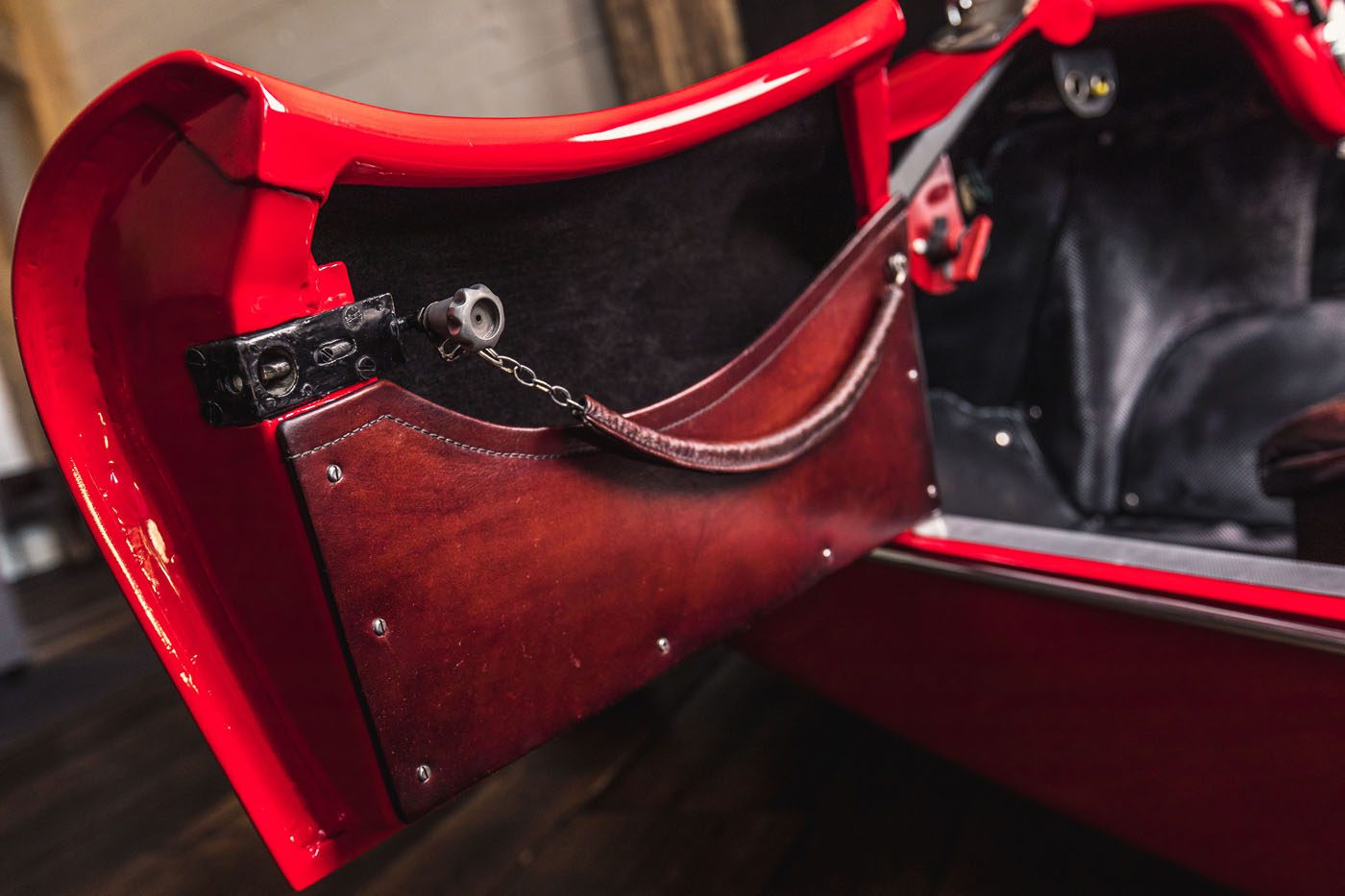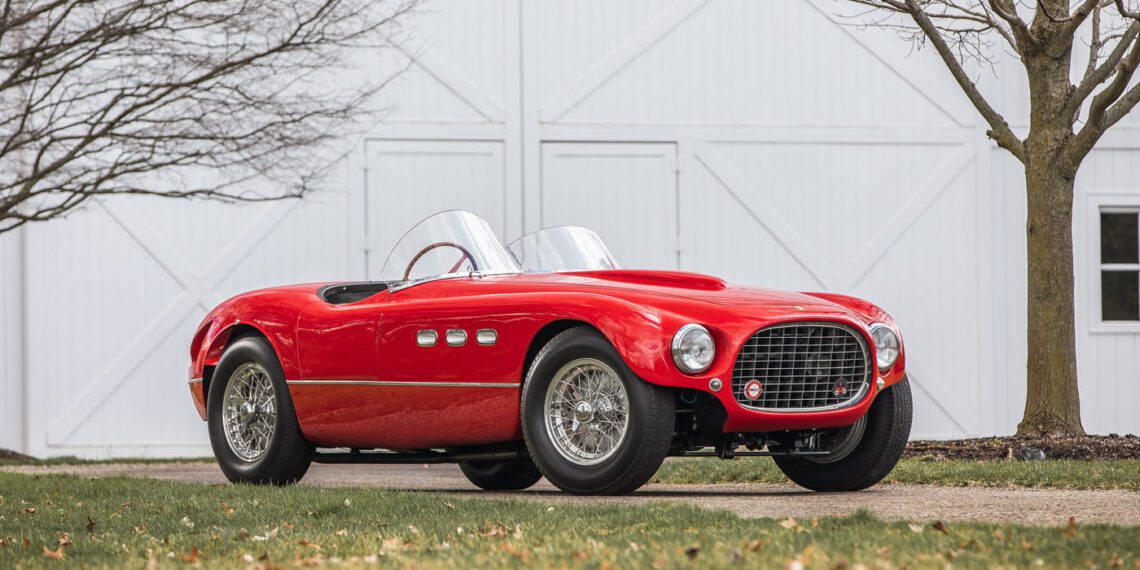Present by RM Sotheby’s.
The Rise of Lampredi’s Long-Block V-12
As the 1949 Grand Prix season approached, Ferrari found itself challenged by a growing trend in the competition: the use of supercharged small-displacement engines. While these high-revving blown motors had proven to be successful, they required such constant maintenance and were so susceptible to failure that Enzo Ferrari was not convinced of the design’s viability in endurance events. Gioacchino Colombo, Maranello’s chief engineer, was in favor of following this trend, and suggested a supercharged version of his tried-and-true V-12.
But junior engineer Aurelio Lampredi had a different idea. He proposed taking advantage of the racing formula by using a naturally aspirated large-displacement engine, and he drew up plans for a completely different architecture that utilized a longer and taller block, single intake porting, and twin ignition. Initially displacing 3.3 liters, this engine found great success in Formula 1 racing, catalyzing Colombo’s exit to Alfa Romeo, and Lampredi’s promotion to Chief Engineer of Ferrari at the ripe age of 30.
As history has shown, Enzo Ferrari was a strong proponent of the cross-pollination of different chassis, engines, and bodies, and he was considering a replacement for the 212 Export, the Colombo-powered competition-intended sports car that was primarily marketed to American privateers. The 3.3-litre Lampredi engine, now known as the long-block V-12 in comparison to Colombo’s short-block design, was dropped into chassis number 0030 MT, and the car was entered, with a similar sibling, at the 1950 Mille Miglia. Transmission failures resulted in early retirements for both cars, but the engine showed immense promise.
At the Paris Salon in October 1950, Ferrari introduced a 4.1-liter version, which was dubbed the 340 America. Equipped with twin-choke Weber 40 DCF3 carburetors and regular Marelli ST66 ignition distributors, the Lampredi engine could now develop circa 280 horsepower. The 340 America soon found success, winning the 1951 Mille Miglia, and it proved to be very competitive in SCCA races in the United States. Despite the 340 America’s potential, however, success at Le Mans remained elusive, and Ferrari sought to build a more powerful successor to defend a victory by a 250 Sport in the 1952 Mille Miglia.


To address these concerns, in early 1953 Maranello introduced the 340 MM, which soon proved to be a dominating force throughout the racing season. Modifications included increasing the wheelbase from 2,420 mm to 2,500 mm, and mounting wider wheels that now measured 6 inches in front and 7 inches at the rear (compared to the America’s respective 5.5- and 6-inch-wide dimensions). Mechanically, the Lampredi engine was updated with lighter conrods and triple Weber four-choke carburetors, discarding the America’s twin-choke units. The prior car’s distributors was now replaced by magneto, and in combination with improved compression and the removal of the exhaust mufflers the engine now developed approximately 30 horsepower more than the America’s (a power boost that was particularly evident when the revs exceeded 5,000 rpm). With a larger 177-liter fuel tank, compared to the America’s 140-litre tank, the MM was clearly specified to be fiercely competitive in endurance racing events.
Ten cars were initially built, seven of which were campaigned by Scuderia Ferrari for the FIA’s new Sports Car Manufacturers’ Championship. Wins at the Mille Miglia, the 24 Hours of Spa, the Nürburgring 1,000 KM, and the Giro di Sicilia were complemented by smaller victories at Silverstone, Montléry, and Seningallia, propelling Ferrari to victory in the 1953 Sports Car Championship.
The 4.1-liter Lampredi engine went on to show further potential at the Carrera Panamericana, and was soon developed into 4.5- and 4.9-liter configurations, the latter of which became the basis of the factory’s impressive win at Le Mans in 1954. But Ferrari’s 1953 championship season, powered by the lithe and attractive 340 MM, would be remembered as the engine’s first sustained period of success in sports car racing, making the 340 one of Maranello’s most cherished early sports-racers.
Chassis No. 0350 AM
For the first 25 years of Ferrari’s life as a car manufacturer, they made a clear distinction for the true racing cars with their chassis numbers. Odd numbers were reserved for road-going or GT cars while even numbers were assigned to Ferrari’s special purpose-built race cars. Even numbers were used on all Scuderia Ferrari sports racers as well as privateer race cars. It was almost exclusively these even-numbered cars which were responsible for building the foundation of Ferrari’s legend on racetracks around the world in the early 1950s, achieving victory in the great races such as the 24 Hours of Le Mans, Mille Miglia, 12 Hours of Sebring, the Nurburgring 1,000 Km, and others. Further, as one would expect, even-numbered cars are far rarer than the odd-numbered cars, with only circa 480 even-numbered race cars built, compared to over 8,000 odd-numbered cars built in that same period.
It is among this elite class of Ferrari sports racers that 0350 AM was born.
Boasting initial ownership by one of America’s most renowned sportsmen of the 1950s, this 340 MM is undoubtedly the car that brought the Lampredi-powered Ferrari to the attention of the U.S. market. Chassis number 0350 AM is the last of ten examples built, and one of just four remaining 340 MM Vignale Spiders, a near identical sister car to the 1953 Mille Miglia winning example.
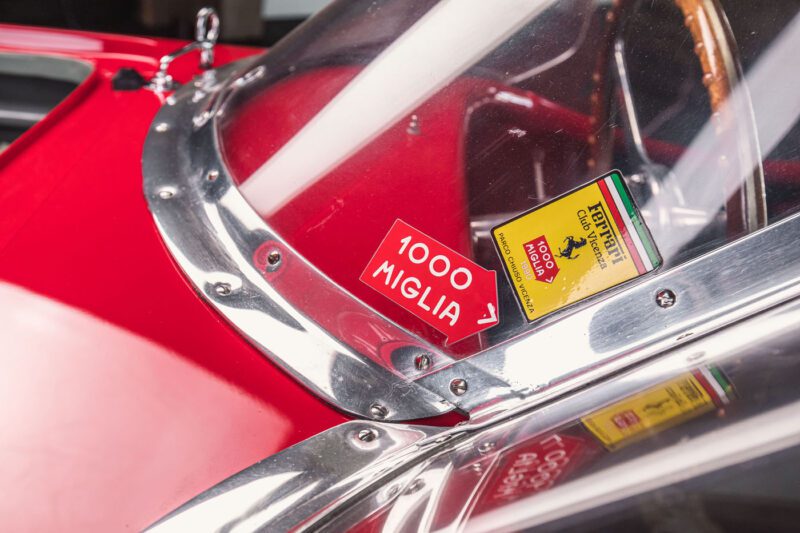
The Ferrari was ordered new through Luigi Chinetti by Sterling Edwards, the prominent California-based businessman, aviator, and sports car racer who went on to build his own European-influenced sports car, the Edwards America, and was a founding chairman of the Pebble Beach road races. Mr. Edwards arrived in Europe in September 1953 with his new bride to take delivery of the 340, and he must have been delighted with the car’s unique coachwork treatment. Generally following the form of prior Ferrari barchettas, the Vignale spider featured the coachbuilder’s characteristic triple oval portholes on the front fenders, triangular cooling vents on the rear fenders, a closed hood bulge with five heat-exhaust slots on each side, and outboard headlamps. The arresting coachwork was finished in a two-tone combination of dark blue and white, reportedly in honor of the buyer’s American nationality.
After driving his new Ferrari on a whirlwind honeymoon tour that closely approximated the route of the Mille Miglia, Edwards transported the car back to San Francisco and immediately began racing it in a slew of West Coast-based SCCA events. Success was instantaneous, as the 340 won in its debut appearance at the Stead Air Force Base in Reno, Nevada, in October 1953. Victories followed at the Palm Springs event in February 1954, and the 5th Annual Pebble Beach Road Races two months later. Photos from the Del Monte Trophy win went on to appear in numerous esteemed motoring books, and Edwards’ come-from-behind triumph over several American V-8 powered models included a record lap time that was never broken.
In June 1954 Edwards placed 2nd at the SCCA Nationals at Golden Gate Park, and two months later he was again victorious at the Seafair event in Seattle, Washington. In Edwards’ final race in 0350 AM at March Air Force Base in November 1954, the car finished 4th overall, concluding a remarkable run of dominating performances that launched him to third place in the 1954 SCCA National C-Class Modified driver standings, trailing only the 4.5 liter 375 MMs of Bill Spear and Jim Kimberly.
In 1955 Edwards sold the 340 MM to Jim Pauley, who vented the hood bulge for improved air intake before selling the car to the well-known Hollywood-based dealer and racing driver Ernie McAfee. Shortly thereafter the Ferrari was purchased from McAfee by Tom Bamford of nearby Woodland Hills, and he repainted the body in Rosso. Bamford went on to campaign the car in several races of his own, most notably finishing 2nd overall and 1st in class at the Los Angeles Sports Car Road Races at Hansen Dam in June 1955.
Life After Racing
In 1958 Bamford sold the Ferrari to Sabu Dastagir, better known simply as Sabu, a onetime Indian child actor who is remembered for his lead roles in such well-regarded 1940s films as Elephant Boy, The Thief of Baghdad, and The Jungle Book. After Sabu died unexpectedly of a heart attack in 1963 at the age of 39, the 340 MM was eventually sold by his estate in 1969 to the partnership of California residents Johnny Johnson and Ernest Mendicki, and the two men retained possession of the potent racecar until 1975, when they sold it to former NART driver Harley Cluxton, the famed proprietor of Grand Touring Cars in Arizona.
The Ferrari was purchased a year later by Donald Dethlefsen of Lake Forest, Illinois, and in 1979 he sold the car to Peter Agg, a collector in England. In 1980 the 340 was acquired from Agg by David Cottingham, the well-known Ferrari restorer in Watford, and his DK Engineering set about a full restoration that included refinishing the coachwork in the original factory color scheme of blue and white, re-sealing the hood bulge, and installing a purpose-built racing engine (while the original Lampredi V-12 was stored). Cottingham drove the spider in several vintage racing events, including the Autumn Sprints at Goodwood and the Club Ferrari France meeting at Mas du Clos in late 1981. A few months later the Ferrari became the cover car of the February 1982 issue of Thoroughbred & Classic Cars magazine.
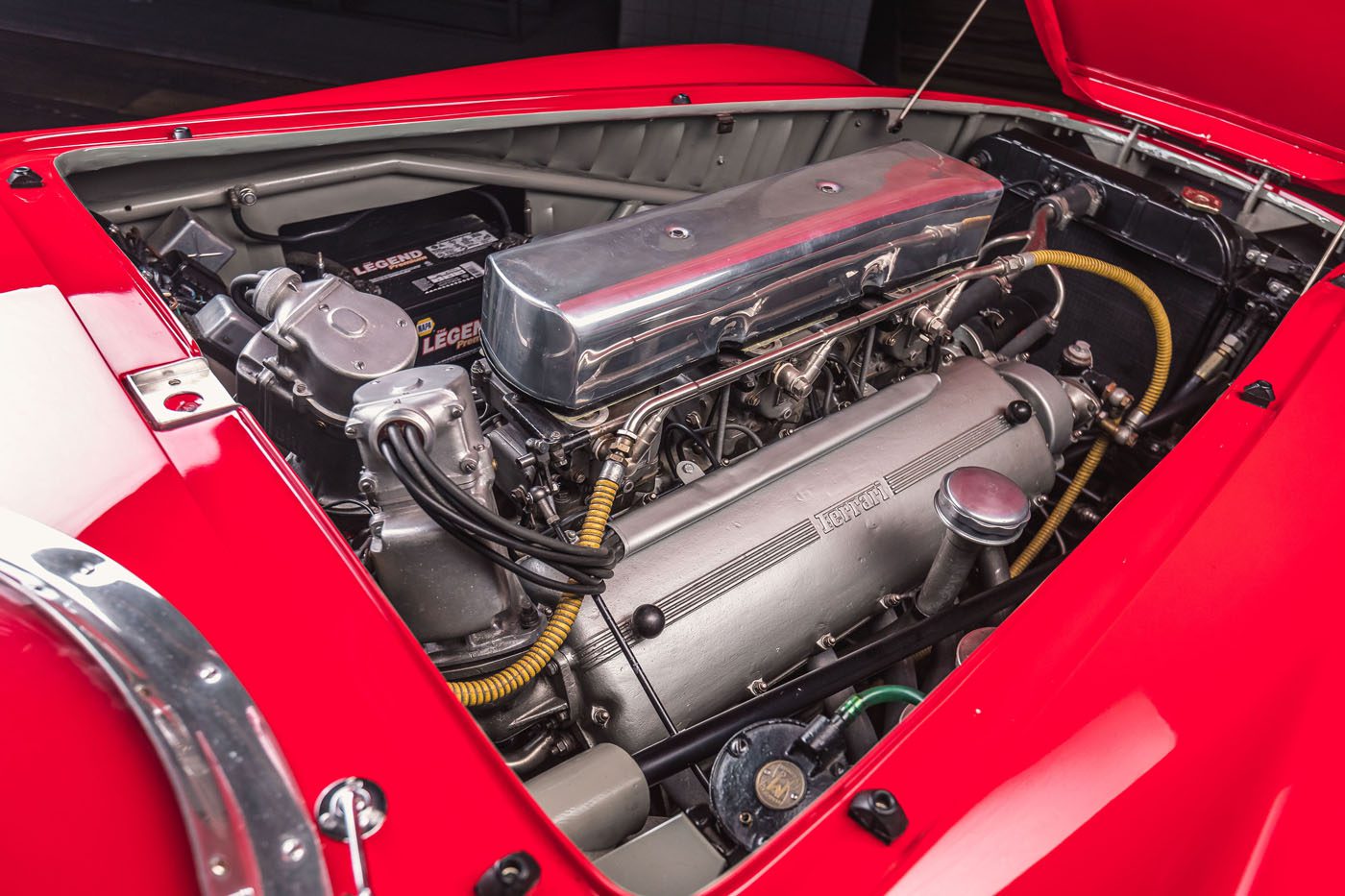
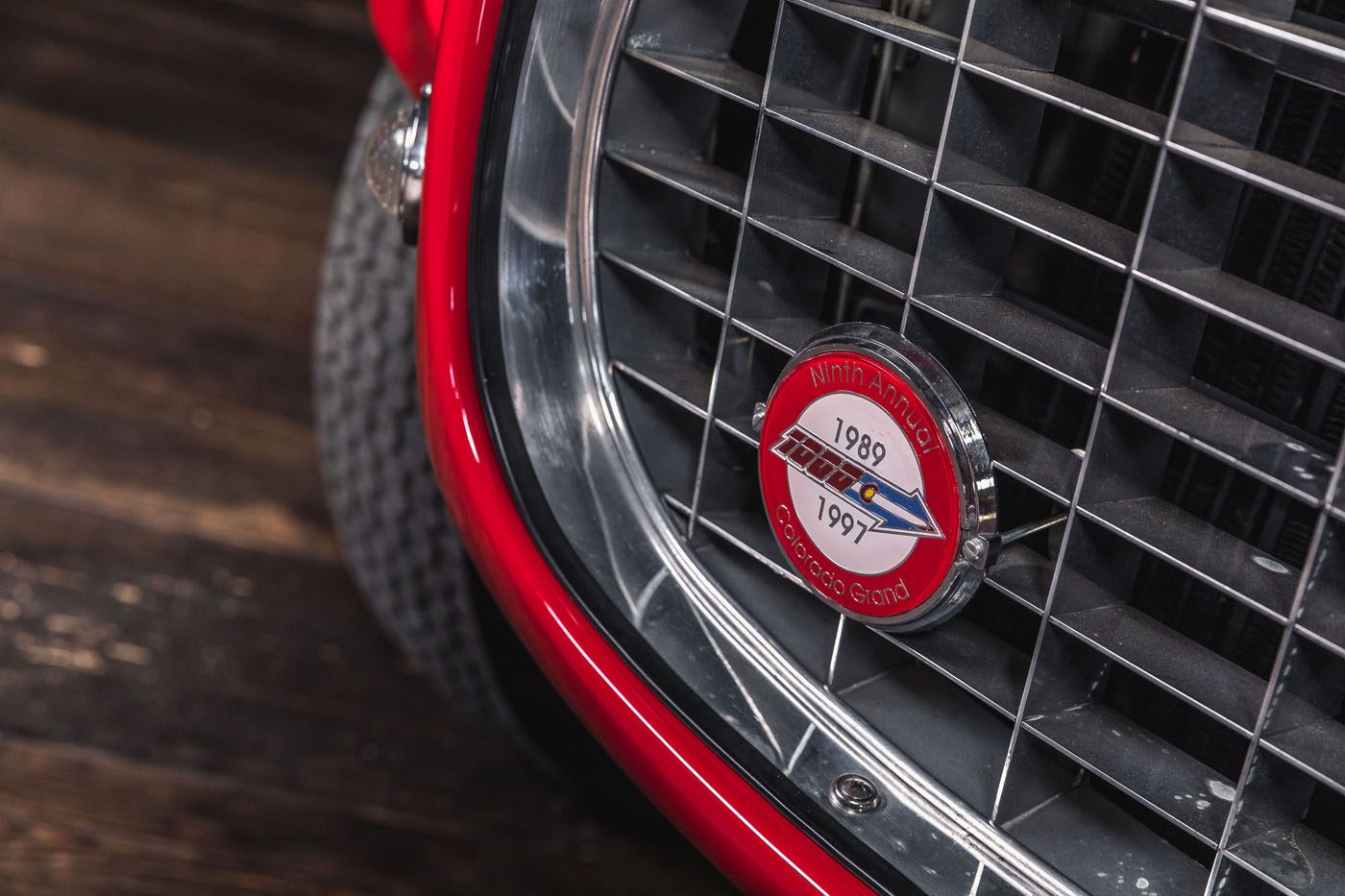
In 1984 Cottingham sold the 340 MM to Sherman Wolf of Amherst, New Hampshire, an electronics technician and collector who was a major force in the development of the personal pager. After repainting the Ferrari red, Wolf presented the car at four different FCA events, and he went on to retain possession until his passing 28 years later. Wolf also enjoyed the exhilarating spider during extensive vintage touring, including five consecutive appearances at the Mille Miglia Storica between 1986 and 1990, and four runs on the Colorado Grand between 1990 and 2000 (at various points both pop musician J. Geils and automotive journalist and driver Denise McCluggage reportedly served as co-pilots). In 1989 Wolf commissioned DK Engineering to return the coachwork to its beautiful blue over white cosmetic livery, and he also exhibited the car at the famous Ferrari Club of America International Concours in 1994, and at the 2000 Pebble Beach Concours d’Elegance.
Acquired by the consignor in 2012, the Ferrari was treated to further sympathetic freshening in 2013 including a refinish in Rosso, and it was again presented at Pebble Beach in August 2015 where it won the Phil Hill Cup. Among many other appearances in the automotive press and well-regarded motoring books, the fascinating and significant spider was the subject of a full feature in the June/July 2021 issue of Cavallino magazine by the esteemed writers Alan Boe and Robert Devlin.
Chassis number 0350 AM is currently fitted with what is believed to be the original engine block from chassis 0032MT, a very important 1950 Scuderia Ferrari Works sports racer, and is notably accompanied by its original Lampredi V-12 long-block engine, the same motor that captured Sterling Edwards four victories in eight racing appearances from 1953 to 1954. This striking and iconic example of Maranello’s pivotal 1953 championship-winning model offers a rare opportunity for Ferrari collectors to acquire a 300-horsepower Ferrari V-12 Spider for a fraction of the price of its later siblings such as the 375 Plus, 290 MM, 410 Sport and 335 Sport. Being the sister car to the 1953 Mille Miglia winner, 0350 AM is in the same rarified breed as legendary cars such as the 300 SLR. As one of the most successful early Ferraris to campaign in SCCA events, the highly desirable spider is undoubtedly the car that first introduced many American enthusiasts to the brilliance of Aurelio Lampredi’s legendary racing engine. 0350AM’s historical significance, combined with the fact that it is one of only a very few select Ferrari examples that is eligible to all of the most important vintage racing and rally events in the world, make it a crowning addition to any collection, ideal for both display and further touring enjoyment.
This vehicle will be offered at RM Sotheby’s 6th biennial Monaco sale, taking place alongside the legendary Grand Prix de Monaco Historique, on 14 May 2022. Held at the glamorous Grimaldi Forum, RM Sotheby’s will offer some of the world’s finest cars in this can’t-miss event.
